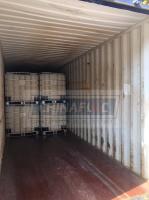PolyDADMAC (C‑587) is primarily used as a cationic coagulant in municipal and industrial water treatment. Its quaternary ammonium structure imparts a robust positive charge, which makes it highly effective at neutralizing negatively charged colloidal particles, organic matter, and color-causing compounds. This sets the stage for efficient flocculation and sedimentation, offering significant benefits over traditional inorganic coagulants like alum or ferric chloride:
-
Drinking Water Purification: PolyDADMAC acts as a primary or secondary coagulant to reduce turbidity, remove humic substances, and lower disinfection byproduct (DBP) precursors. It often allows for reduced dosing of aluminum-based salts and generates less sludge Reddi
-
Municipal Wastewater: Applied in primary clarifiers and as a tertiary treatment aid, it simplifies solids removal and reduces sludge production chinafloc.comyuncangchemical.com.
-
Industrial Effluent: Widely used in sectors such as textiles, dyes, chemicals, food processing, and pulp and paper, PolyDADMAC aids in turbidity control, color removal, and separation of suspended solids and organics chinafloc.comchemtexltd.comyuncangchemical.com.
2. Sludge Dewatering and Conditioning
PolyDADMAC C‑587 is also effective in treating sludge in both municipal and industrial contexts:
-
Charge-neutralizing Pre‑treatment: It precedes high-molecular-weight anionic polyacrylamide in dual‑polymer systems, improving sludge structure and dewatering efficiency.
-
Enhanced Cake Dryness: In belt presses, centrifuges, and filter presses, PolyDADMAC creates compact flocs that dewater quickly, reducing polymer usage and sludge volume Reddit+15tairanchemical.com+15yuncangchemical.com+15.
3. Paper and Pulp Industry
In papermaking, PolyDADMAC C‑587 serves multiple roles at the wet end:
-
Fixation Agent for “Anionic Trash”: It binds pitch, resin acids, and dissolved organic matter, reducing deposition and improving clarity of white water circuits.
-
Retention and Drainage Aid: Used alone or in combination with microparticle systems, it helps retain fillers and fines (e.g., kaolin, calcium carbonate), promotes drainage, and improves paper formation and machine runnability chemtexltd.comWikipedia.

